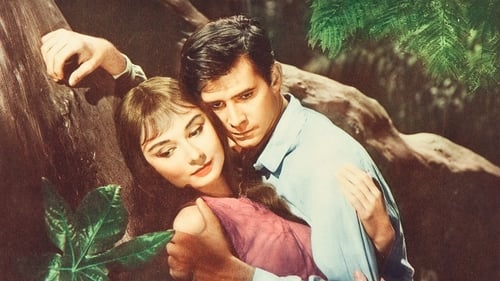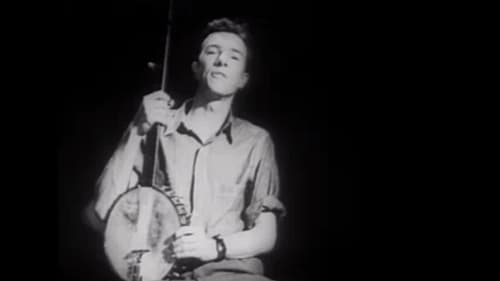Alan Lomax
Birth : 1915-01-31, Austin, Texas, USA
Death : 2002-07-19
History
Alan Lomax was an American field collector of folk music of the 20th century. He was also a folklorist, ethnomusicologist, archivist, writer, scholar, political activist, oral historian, and film-maker. Lomax produced recordings, concerts, and radio shows in the US and in England, which played an important role in both the American and British folk revivals of the 1940s, 1950s and early 1960s. He collected material first with his father, folklorist and collector John A. Lomax, and later alone and with others, Lomax recorded thousands of songs and interviews for the Archive of American Folk Song, of which he was the director, at the Library of Congress on aluminium and acetate discs.

Producer
In the early 1960s, when Greenwich Village was bursting with a folk music revival, the Friends of Old Time Music made it their mission to introduce urban audience to some of the legends of pre-war American traditional music. After a 1961 series of concerts featuring Roscoe Holcomb, Clarence Ashley and Doc Watson, Alan Lomax invited the artists and a who’s who of the folk revival back to his West 3rd Avenue apartment for an impromptu song swap. Filming was arranged on the fly and a raw, many-layered evocation of the art and attitude of the period emerges from the footage, with some of the biggest names of the era, old timers and revivalists alike: Memphis Slim, Willie Dixon, Jean Ritchie, Ernie Marrs, Peter LeFarge, Ramblin Jack Elliott, Guy Carawan,the Greenbriar Boys, and the New Lost City Ramblers.

Self
In the early 1960s, when Greenwich Village was bursting with a folk music revival, the Friends of Old Time Music made it their mission to introduce urban audience to some of the legends of pre-war American traditional music. After a 1961 series of concerts featuring Roscoe Holcomb, Clarence Ashley and Doc Watson, Alan Lomax invited the artists and a who’s who of the folk revival back to his West 3rd Avenue apartment for an impromptu song swap. Filming was arranged on the fly and a raw, many-layered evocation of the art and attitude of the period emerges from the footage, with some of the biggest names of the era, old timers and revivalists alike: Memphis Slim, Willie Dixon, Jean Ritchie, Ernie Marrs, Peter LeFarge, Ramblin Jack Elliott, Guy Carawan,the Greenbriar Boys, and the New Lost City Ramblers.

Director
In the early 1960s, when Greenwich Village was bursting with a folk music revival, the Friends of Old Time Music made it their mission to introduce urban audience to some of the legends of pre-war American traditional music. After a 1961 series of concerts featuring Roscoe Holcomb, Clarence Ashley and Doc Watson, Alan Lomax invited the artists and a who’s who of the folk revival back to his West 3rd Avenue apartment for an impromptu song swap. Filming was arranged on the fly and a raw, many-layered evocation of the art and attitude of the period emerges from the footage, with some of the biggest names of the era, old timers and revivalists alike: Memphis Slim, Willie Dixon, Jean Ritchie, Ernie Marrs, Peter LeFarge, Ramblin Jack Elliott, Guy Carawan,the Greenbriar Boys, and the New Lost City Ramblers.

Archival Footage
Every American who has listened to the radio knows Guthrie's "This Land Is Your Land." The music of the folk singer/songwriter has been recorded by everyone from the Mormon Tabernacle Choir to U2. Originally blowing out of the Dust Bowl in Depression-era America, he blended vernacular, rural music and populism to give voice to millions of downtrodden citizens. Guthrie's music was politically leftist, uniquely patriotic and always inspirational.

Self (archive footage)
Alan Lomax (1915-2002) was a song collector who recorded ordinary people, who gave their heart and soul in front of his microphone. The film maker decides to search for people Lomax recorded, travelling through Europe in an old Volkswagen. His journey leads him past desolate Scottish islands, through the withered interior of Spain and to isolated Italian mountain villages. The search is combined with conversations with colleagues and friends of Lomax. Throughout the movie, every now and then we return to a frail but happy 86-year old Lomax. In this passionate and musical roadmovie we slowly discover why folk music can be so pretty and what could have once possessed the legendary Alan Lomax.

Director
Includes "Devil Got My Woman," "I'm So Glad," "Worried Blues," "Keep Your Lamp Trimmed and Burning" and more. Features Bukka White, Son House, Howlin' Wolf and more! The Newport Folk Festival has long been known for its contribution to spreading the gospel of traditional American song. This 1966 performance from the festival was manufactured by celebrated archivist Alan Lomax. He created a juke joint atmosphere complete with flowing liquor and this film documents all the action. The juke joint setting may add considerable flavor, but even without the theatrics the footage of the blues legends stands on its own. Prime performances are delivered by Son House, Bukka White, Howlin' Wolf, Reverend Pearly Brown, and Skip James. Between songs the Wolf taunts Bukka and as the music plays the audience dances at a fever pitch.

Director
Appalachian Journey is one of five films made from footage that Alan Lomax shot between 1978 and 1985 for the PBS American Patchwork series (1991). It offers songs, dances, stories, and religious rituals of the Southern Appalachians. Preachers, singers, fiddlers, banjo pickers, moonshiners, cloggers, and square dancers recount the good times and the hard times of rural life there. Performers include Tommy Jarrell, Janette Carter, Ray and Stanley Hicks, Frank Proffitt Jr., Sheila Kay Adams, Nimrod Workman and Phyllis Boyens, Raymond Fairchild, and others, with a bonus of a few African-Americans from the North Carolina Piedmont. Narrated by Alan Lomax. The Association for Cultural Equity’s Alan Lomax Archive channel on YouTube additionally streams outtakes from this film: other strong performances by Sheila Kay Adams, Dellie Norton, and Cas Wallin, Lawrence Eller, the Hickses, Algia Mae Hinton and John Dee Holeman, Tommy Jarrell, John “Doodle” Thrower, and Nimrod Workman.

Director
The bayous of Louisiana have combined French, German, West Indian, native American and hillbilly ingredients into a unique cultural gumbo. Cajun Country investigates Cajun's roots in Western France, visits their cattle drives, horse races, and barroom dances in rural Louisiana, and listens to the salty tales and raunchy songs of its black, white, and Indian music-makers. Performancers include Canray Fontenot, Bois Sec Ardoin, Michael Doucet, Octa Clark, Dewey Balfa, and Dennis McGee.

Director
An examination of the talents and wisdom of elderly musicians, singers, and story-tellers, who perform not for fame or fortune but to preserve and share their culture. Stories told by Janie Hunter (80 years old) of Johns Island, S.C.; ballads sung by ex-coal miner and union organizer Nimrod Workman (91), of Chatteroy, W.V.; fiddle tunes and tales of moonshining and feuds from Tommy Jarrell (83) of Toast, N.C.; and footage from the Alabama Sacred Harp Convention in Fyffe, Alabama, in which people of all ages gather to sing old-time shape-note hymnody.

Director
A celebration of New Orleans' musical culture — from its piano bars and barrelhouses to brass bands and street parades, with their colorful, riotous, and symbolic second lines, in which the community plays an essential part in the performance. Shot in the thick of funeral parades and nightclubs, with performances by the Preservation Hall Jazz Band, the Dirty Dozen Brass Band, and Danny Barker, Feet Don't Fail Me Now tells the story of New Orleans' utterly unique and valuable jazz heritage.

Self
1990 BBCTV documentary on the life of the late celebrated folk singer, playwright and political activist

Producer
An exploration of the musical and social origins of the blues, shot on location in Mississippi in 1978 by Alan Lomax, John Bishop, and Worth Long in association with the Mississippi Authority for Educational Television and broadcast on PBS in 1980. This re-release in 2009 includes two hours of additional music.

Writer
An exploration of the musical and social origins of the blues, shot on location in Mississippi in 1978 by Alan Lomax, John Bishop, and Worth Long in association with the Mississippi Authority for Educational Television and broadcast on PBS in 1980. This re-release in 2009 includes two hours of additional music.

Director
An exploration of the musical and social origins of the blues, shot on location in Mississippi in 1978 by Alan Lomax, John Bishop, and Worth Long in association with the Mississippi Authority for Educational Television and broadcast on PBS in 1980. This re-release in 2009 includes two hours of additional music.

Director
Alan Lomax and his associates, beginning in the late 1950s undertook a monumental study of the relationship between style in song and dance cross-culturally. It began with Cantometrics which developed a common language description for the many variables in performance style in the diverse cultures of the world and measured how those variables clustered geographically and in relation to means of subsistence and aspects of social organization. Choreometrics continued this investigation into dance and movement. A continuation of Alan Lomax & Forrestine Paulay's Choreometrics project, this film examines the use of the foot in dance cross culturally. Though this film comes from later in the project, below is an interesting article written by Lomax about the methodology he was developing for this sort of film.

Sound Recordist
Three separate events: the birth of a litter of pups at a British reform school for delinquent minors in 1946; a dentist's convention in Cincinnati circa 1936; and common place views of New York City in the 1920s as interpreted by a visitor from Ohio.

Director
Introduces the work of Alan Lomax and his colleagues in developing choreometrics, a cross-cultural method of studying the relationship of dance style to social structure. Shows how the group, including Forrestine Paulay and Irmgard Bartenieff, analyzed dance films from all over the world and established a connection between patterns of movement and patterns of culture.

Thanks
A young Venezuelan idealist flees his native land to escape a revolution. Hoping to find peace, he goes to the mountains and the forests of the Amazon. There he encounters Rima, the Bird Girl, an orphan living a life of nature, who is feared by a local jungle tribe.

Writer
Padstow, a fishing village on the coast of Cornwall, celebrates May Day with an ancient custom: two osses (hobby-horses) dance through the town streets accompanied by drums and accordions. All Padstownians participate in the event, which has now become a tourist attraction drawing over tens of thousands of annual visitors. Folklorists Alan Lomax and Peter Kennedy and filmmaker George Pickow collected footage at the festival in 1951, producing a pioneering work in the use of sound, low-light photography, and conversational presentation of narrative. A favorite of Margaret Mead, who used it in her classes, the film circulated widely and continues to have influence today, especially in the neo-Pagan community.

Director
Padstow, a fishing village on the coast of Cornwall, celebrates May Day with an ancient custom: two osses (hobby-horses) dance through the town streets accompanied by drums and accordions. All Padstownians participate in the event, which has now become a tourist attraction drawing over tens of thousands of annual visitors. Folklorists Alan Lomax and Peter Kennedy and filmmaker George Pickow collected footage at the festival in 1951, producing a pioneering work in the use of sound, low-light photography, and conversational presentation of narrative. A favorite of Margaret Mead, who used it in her classes, the film circulated widely and continues to have influence today, especially in the neo-Pagan community.

Writer
A short film about Pete Seeger and the birth of banjo music throughout the Southern United States.




